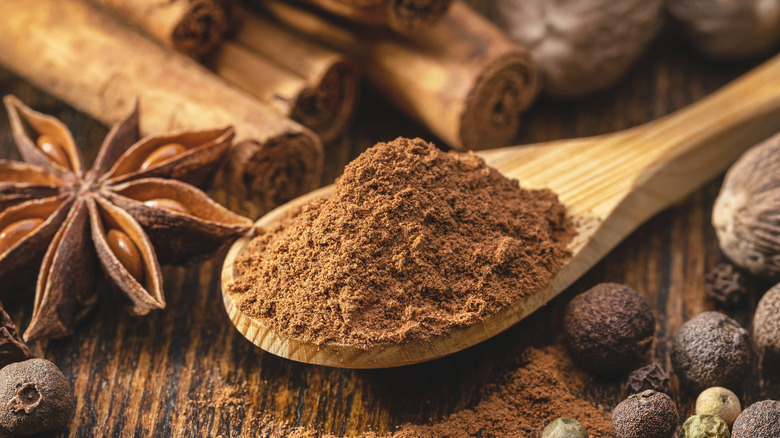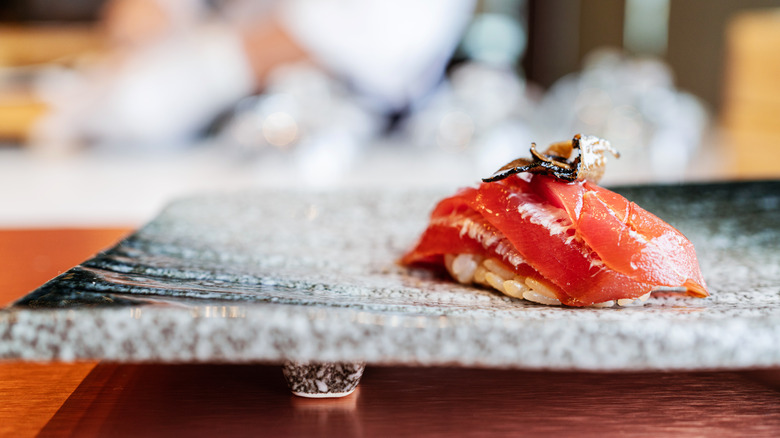Pumpkin Spice And 2 Other Food Words Were Added To The Dictionary
It's almost officially fall, with the equinox falling on September 22 this year, according to Old Farmer's Almanac. So we've got one question for you: Have you gotten your pumpkin spice on yet?
Since 2003, this warming blend of spices including cinnamon, nutmeg, and ginger (via Allrecipes) has taken the food world by storm, starting with one very important innovation: the Pumpkin Spice Latte, aka PSL, which was introduced at select Starbucks locations that fall (via Starbucks). A seasonal smash hit whose arrival in Starbucks stores is still hotly anticipated each fall. The PSL has inspired countless pumpkin-spiced food and drink adaptations over the past couple of decades. Each autumn, the blend turns up in a staggering array of snacks and beverages, such as this year's Chobani coffee creamer, Jet-Puffed marshmallows, and Land O' Lakes butter — all featuring pumpkin spice (via People).
While pumpkin spice may have entered the vernacular around 20 years ago, it appears that the folks at Merriam-Webster, the iconic dictionary that was first published in 1847 (via its official website), are just now catching up and adding the term to its dictionary.
Pumpkin spice, omakase, and mojo are among the food terms added to the dictionary
In a press release published on September 7, 2022, the revered dictionary Merriam-Webster announced the inclusion of a few food terms to its database: Omakase, mojo, and pumpkin spice. The pumpkin spice blend, which most of us know from being in everything from hummus to bagels (via VegNews), is defined as "a mixture of usually cinnamon, nutmeg, ginger, cloves, and often allspice that is commonly used in pumpkin pie" (via Merriam-Webster). The definition notes that the term was first used in 1931, though it doesn't provide the exact context.
Fans of Japanese food are likely already familiar with the meaning of omakase, which Merriam-Webster now defines as, " ... a series of small servings or courses (as of sushi) offered at a fixed price and whose selection is left to the chef's discretion." And those who love Cuban food might crave mojo, whose definition reads, " ... a sauce, marinade, or seasoning that is usually composed primarily of olive oil, garlic, citrus juice, and spices (such as black pepper and cumin)." We don't know about you, but now we're craving all three preparations: Perhaps a small selection of sushi rolls, followed by a Cuban sandwich, all washed down with a bit of pumpkin spice-infused vodka?

